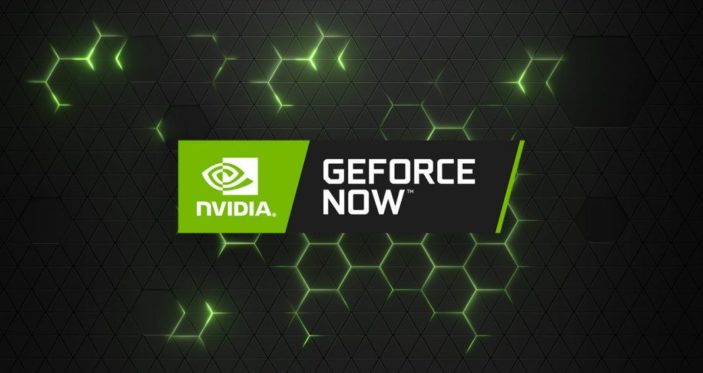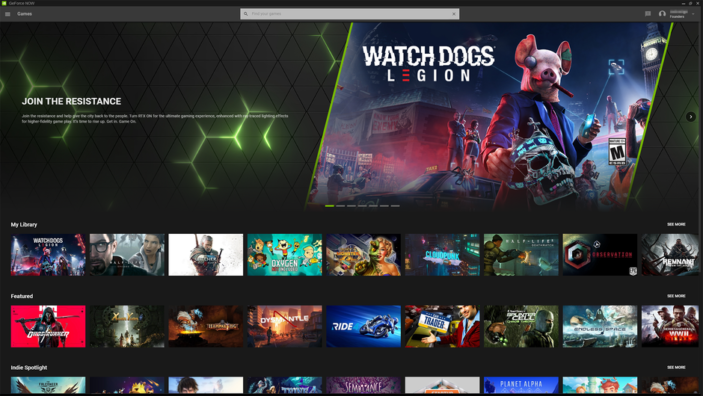
It’s no secret that next-generation consoles are hard to come by. But with new games and exclusive features gracing such consoles, we don’t blame people for wanting to enhance their gaming experience, future-proofing their software and hardware for the best possible performance and fidelity. Cloud-based gaming has made its way over to Australia in the form of XCloud, but if you’re looking to play anything, particularly your personal PC library, Nvidia GeForce Now might just be the option for you.
Up in the Clouds
Powered by tech company Pentanet within Australia, Nvidia GeForce Now’s premise is simple; play your games on a PC or other device of your choice, all while utilising Nvidia’s remote servers, packed with beefy hardware. While we mentioned next-generation tech could be quite hard to come by, graphics cards are unfortunately no different. Nvidia GeForce Now allows you to take advantage of such hardware, utilising ray-tracing graphics via RTX GPUs and a response time that claims to be unmatched within the remote gaming sphere. In many respects, Nvidia GeForce Now isn’t messing around. Playing games via the service is simple and effective, as you are able to connect three gaming libraries/launchers into one convenient location. Through your Steam Library, Epic Games library, and Ubisoft library, all of your current games can be accessed and routed through Nvidia’s services, all on a device that may not be able to handle such games in the first place.

Off the bat, Nvidia GeForce Now runs well. You’ll get the chance to stream all your favourite games in 1080p at 60 frames per second, provided your internet connection is up to scratch. That being said, Nvidia GeForce Now is heavily dependent on what you bring to the table in terms of your connection. I run an average NBN connect with download speeds of 45-50 Mbps and upload speeds of 20-25 Mbps. While I would always recommend a wired connection for the sake of stability, a wi-fi connection will do just fine; for the most part. I booted up Destiny 2 with minimal effort, and played through a solid hour, with surprising results. The resolution held stable, with a few minor frame rate drops throughout. But the real selling point is the input lag. It’s just so minimal that you’ll forget you’re streaming a game rather than running it locally.
What to Choose?
Nvidia GeForce Now offers two subscription models, a Basic plan, which is free, and a Premium plan, which costs $19.99 AUD per month. The Basic option gives you access to one-hour play sessions, standard queuing privileges, and limited RTX features. A Premium subscription, however, gives you priority queuing privileges, allowing you to skip server queues, four-hour play sessions, and access to true RTX features like ray-tracing. Unfortunately, Nvidia GeForce Now forces you to duck out of your session when your playtime is up. This isn’t a lengthy process, and the server does warn you within ten minutes of your session ending, but it’s still annoying to have to repeatedly bounce in and out of your session. While Premium access players might not always play for more than four hours at a time, I’m surprised there’s even a cap on play sessions at all.

Nvidia GeForce Now’s true struggle lies within its library. Sure, you’re able to play on a PC, Android TV, Chrome, Android, and Safari, giving your solid accessibility, but I only bring it up because, in terms of a library, there isn’t one. Unless you’re trying some free-to-play options like Destiny 2 and Fortnite, you’ll be adding and purchasing games from various libraries, which you’ll already need an account for. I feel as though most gamers who build such extensive libraries already have access to either console or PC hardware. But if I was a gamer with no hardware at all, and let’s say a basic office PC, I’m not sure how much I would be investing in my library given I have nothing necessarily concrete to play it on. But this would work for certain audiences. Don’t have a PlayStation 5, Xbox Series X, or gaming rig at home, but want to jump on a quick game of Fortnite with your friends? Thanks to Nvidia GeForce Now, that’s entirely possible, and technically for free. But given other cloud-based services like XCloud that come tacked onto pre-existing subscription services like Xbox Game Pass, you’ll not only gain remote-based gameplay, but a robust library of games to play and for less money, should you have chosen the Premium subscription. The difference here is that you won’t be getting solid response times and choppier frame rates, but the options are indeed there.

It is truly interesting however that Nvidia GeForce Now has decided to set themselves apart in this way. We got the chance to chat to Stephen Cornish, Pentanet’s Managing Director, on this shift to cloud gaming and the evolving gaming landscape, in which he elaborated.
“This is also the main reason why Pentanet was chosen as NVIDIA’s Australian GFN Alliance Partner, we were gamers that built our network that had the high-performance connectivity required for gaming. I believe over time as we’ve seen in other streaming sectors, cloud gaming will become an increasingly popular choice for gamers over fixed hardware. I’m also a firm believer that within one generation, it’s going to be odd to have a computer anymore, very much like it is even seeing a CD or a floppy disc these days. It’ll be this archaic thing; kids won’t even know what a computer is.”
This is totally understandable. This shift towards a more refined version of cloud gaming, with access to the latest and greatest tech, is a solid theoretical foundation for a possible future in gaming.
Final Thoughts
Nvidia GeForce Now offers some of the best and most stable cloud gaming on the market in 2022. Depending on your choice of subscription, this may limit exactly how much and how long you’re able to enjoy it. Due to some minor frame rate drops and the chore of ducking in and out of your game once your session is up, I think this is a great place to start with the next generation of gaming, particularly for those who can’t get their hands on a console. Bring a stable internet connection to the mix and you’re as close to home as you can possibly get.
THREE AND A HALF STARS (OUT OF FIVE)
Highlights: Solid performance; Easy way to play the latest games on any device; Links existing launchers and game libraries
Lowlights: Experience determined by personal internet connection; Games must still be purchased in order to be used
Developer: Nvidia
Platforms: Windows PC, Android TV, Chrome, Android, iOS
Available: Now
Review conducted on Windows PC with a Premium subscription provided Nvidia.
